Dear Friends,
We are pleased to bring you a special edition of Ambiguous Zones, 14, written by our summer intern, Jlynn Rose, who joins us from Pratt Institute where she is completing a BFA in Fine Arts with a minor in art history and philosophy. In her essay, “WORD RAIN: Poetics of Friction and Conflation,” Jlynn shares her reflections on some of Madeline Gins’s work after reading The Saddest Thing Is That I Have Had to Use Words: A Madeline Gins Reader, edited by Lucy Ives, in the first week of her internship. Taking Ives’s invocation of Adrian Piper in her introduction as a starting point, Jlynn moves on to a rigorous investigation of Gins’s words.
Yours in the reversible destiny mode,
Reversible Destiny Foundation and the ARAKAWA+GINS Tokyo Office
WORD RAIN: Poetics of Friction and Conflation
By Jlynn Rose
In Lucy Ives’s introduction to The Saddest Thing Is That I Have Had to Use Words: A Madeline Gins Reader, edited by Ives and published by siglio in 2020, she draws a parallel between Gins and another conceptual artist, wordsmith, and philosopher, Adrian Piper. Specifically, Ives notes that Piper’s Food for the Spirit (1971), a performance piece and series of fourteen black-and-white self-portraits, is a documentation of the pervasiveness and intrusion of the written word, something Gins is likewise concerned with throughout her work[1]. Piper, secluded one summer in her New York loft, spent her time meditating, fasting, and reading Kant’s Critique of Pure Reason. Entering a dissociative state brought upon by this isolation, Piper sought to retether herself to reality. She set up a camera and tape recorder near her mirror to photograph her body and record herself reciting key sections of the text—the physical form concretely rendered as it processes ideas external to it. She did this sporadically, whenever she felt the need to regain immediacy with herself. Piper evinces the desire for transcendence through thought, juxtaposed with anxiety about the body’s displacement or relegation. There is a difficulty in reconciling our physical form with the exaltation of words, the promise of a priori knowledge. The self, inextricable from objecthood and the exigencies of a fluctuating life and body, remains tethered to the external world through sensation, inhibiting the ascent implied on the page.
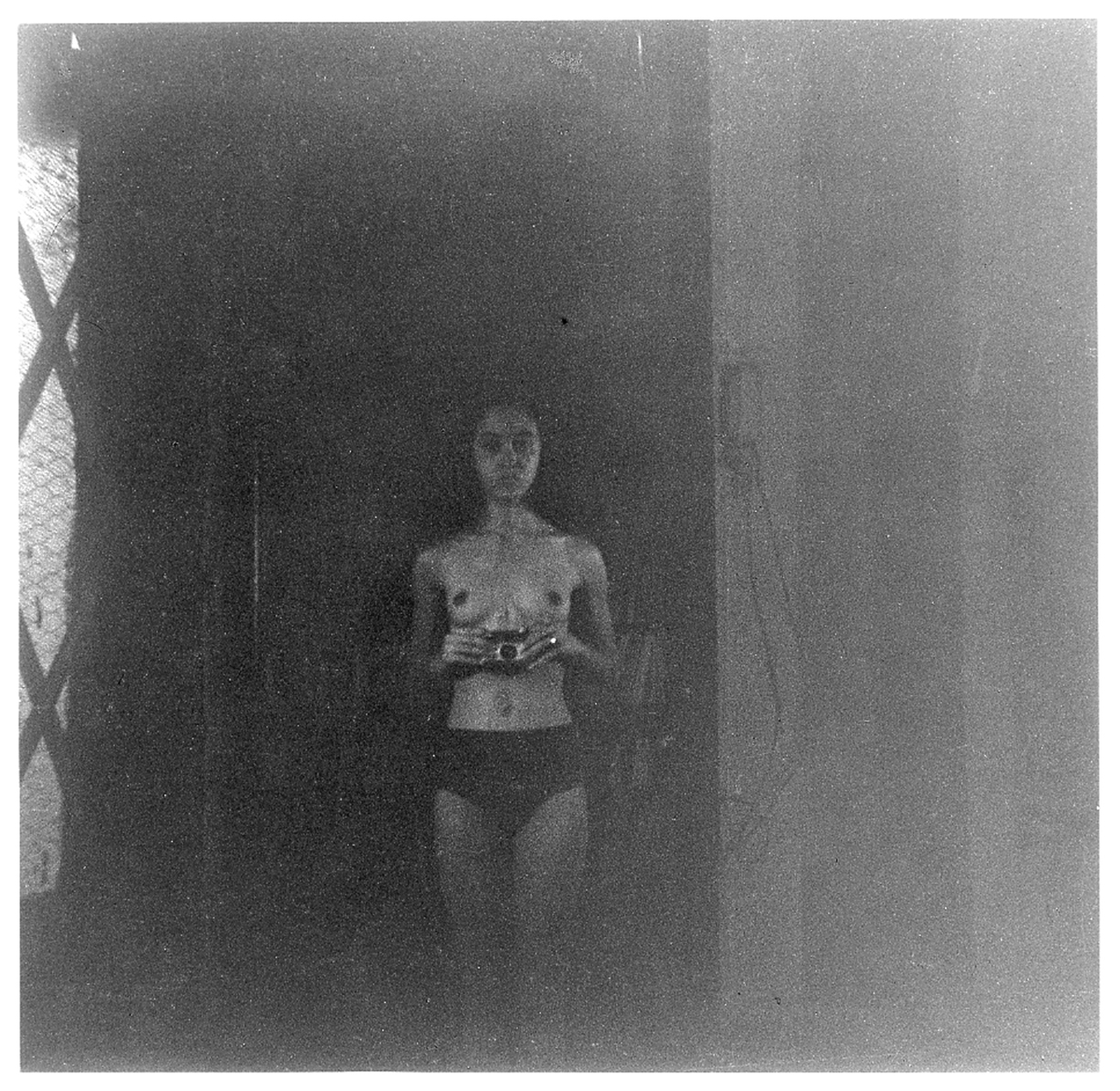
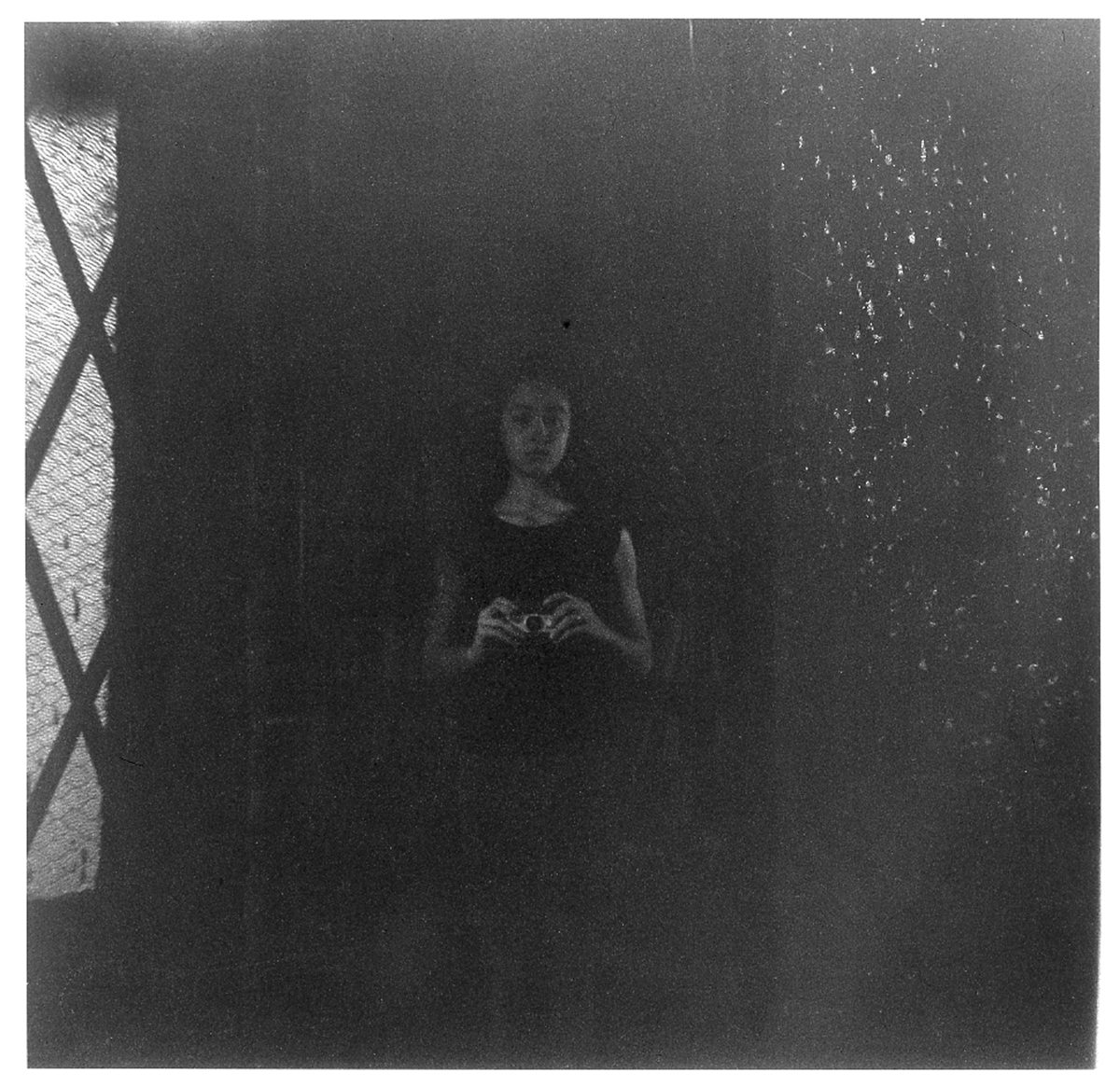
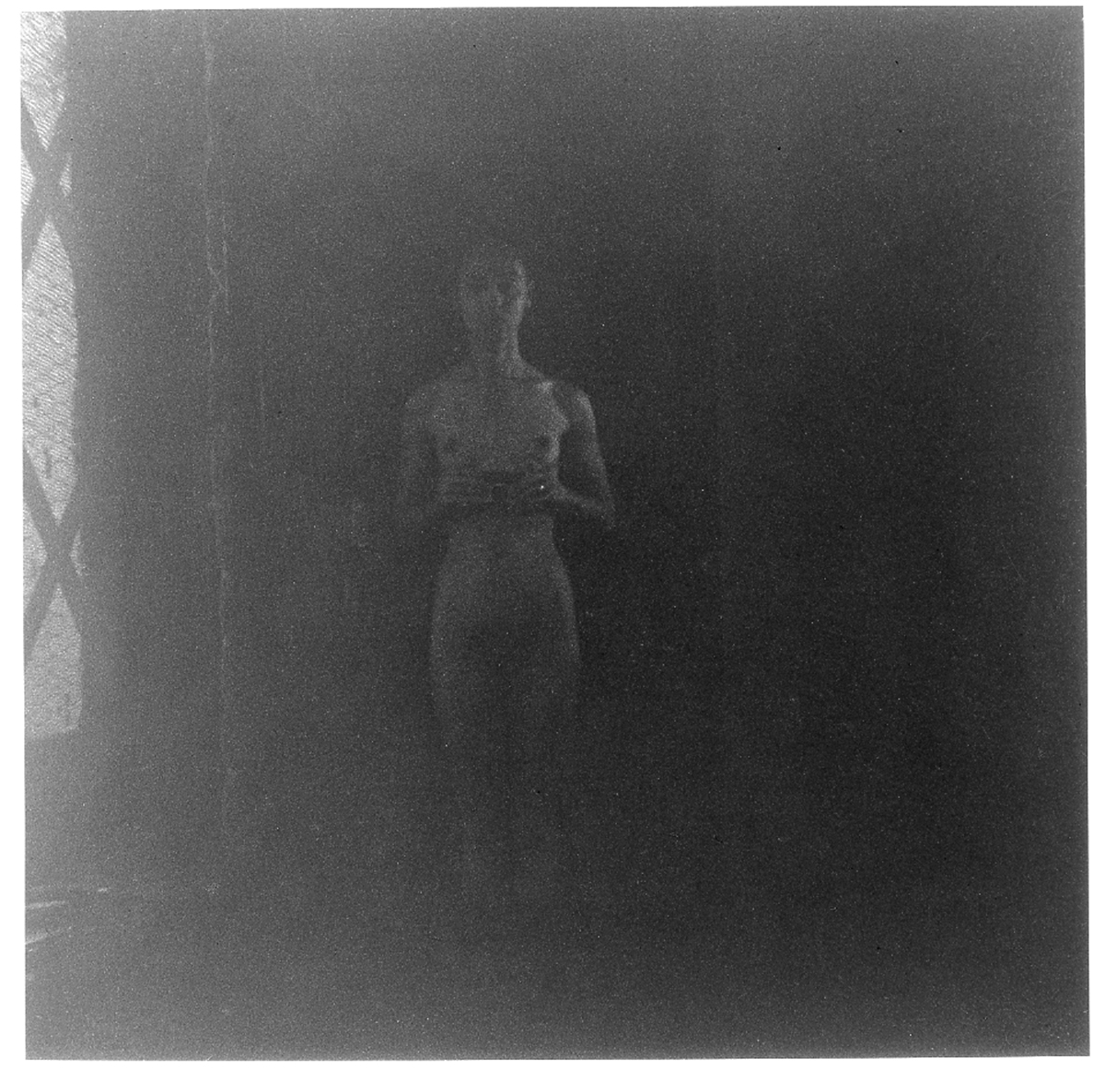
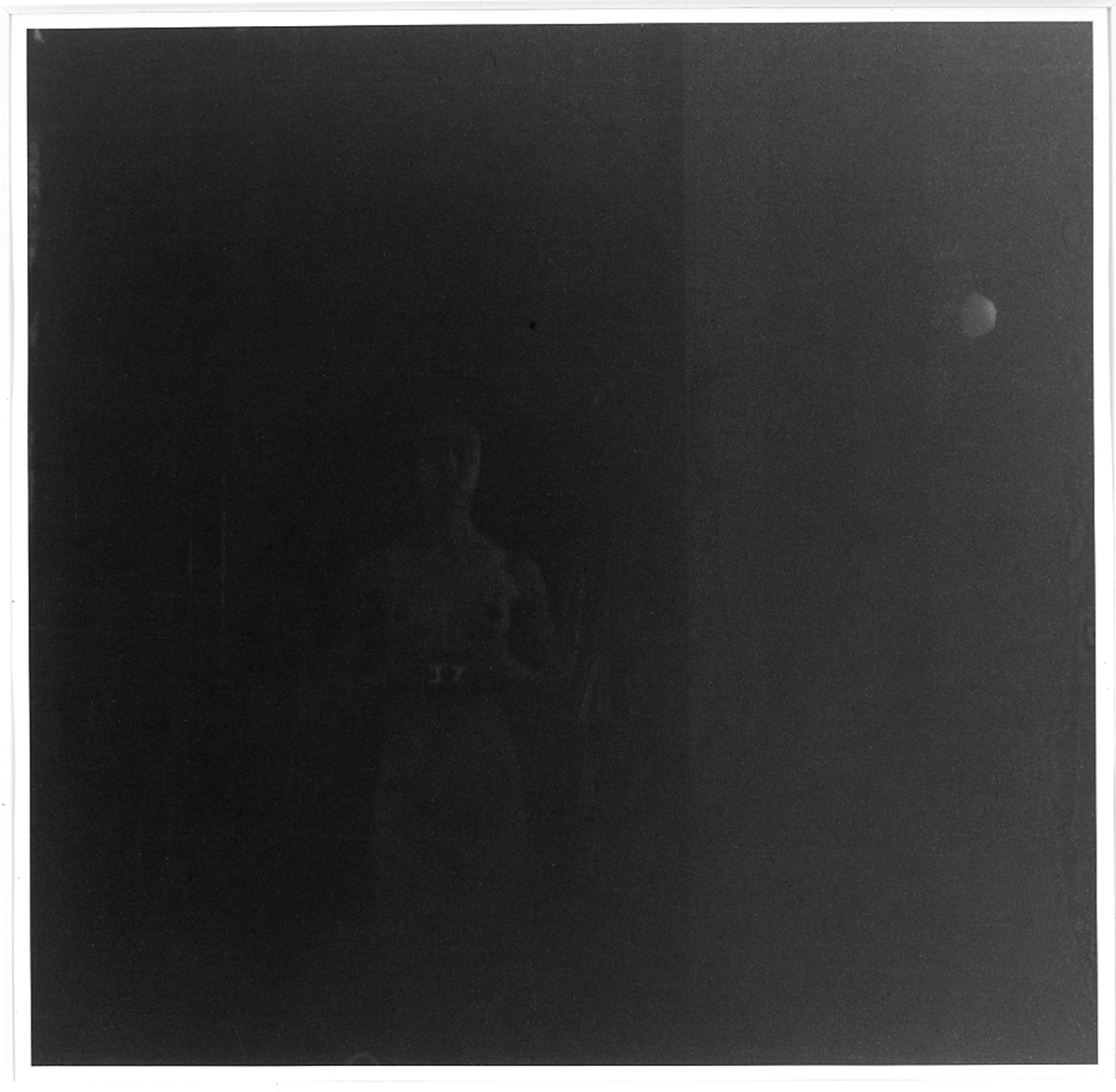
Poignantly revealed in Ives’s comparison is how Piper and Gins both collapse differentiations of body, self, medium, and messaging. Critique of categorical frameworks is quintessential of postmodern art and theory. Conceptualism signaled the primacy of the idea, philosophy, or sociopolitical imperative behind an artist’s work. This meant that to be bound by medium, conventional modes, and forms for an art object, was to limit intellectual expression. Thus, artists increasingly worked irrespective of formal concerns. Likewise, a critique of the arbitrariness of signifiers along with a visual culture of readymade images, simulacra, is a common sentiment in postmodern thought and media theory. But unlike philosophers and theorists who in some sense rely on the tools and frameworks they critique, Piper and Gins express and embody this criticism through their creative practices. A threat to stable boundaries is both the content of their work and their mode of expression. Working in this way, they not only render our condition tangible but suggest alternatives by lingering in ambiguous zones. Case in point: Piper took a series of photographs documenting a performance she did in solitude, a bodily response to a written philosophical treatise—a collision of means of expression, private experience, and shared cultural objects. There is no catharsis from authorial control and resolution. Written language imbricates mental space, which tapers off into the physical space of the body. In this submersion in language, with ideas detached from the identity of both authors, internal and external worlds come crashing into each other. Is this transmission invasion?
Because Piper’s piece is a response to a written work, we may ask how Gins manages to address similar themes as an author, from within the book itself. Linguistic intrusion vividly rears its head in WORD RAIN (or A Discursive Introduction to the Intimate Philosophical Investigations of G,R,E,T,A, G,A,R,B,O, It Says), 1969, in which it is a force, distraction, and variable atmosphere.[2] There is of course tension and potential violence in the extraction-exchange of subjects. Verbal language is a time-based medium—it is a site that necessitates reaction, reciprocity, and mutual contexts. The written word to some extent allows the author to escape the opposition inherent in verbal language. Text imposes itself without a body or voice and creates a difference in time and space to that of the recipient: it is a medium of disembodiment and disassociation. But, as Marshall McLuhan would have it, media are ultimately derivative of each other—the content of writing is speech and the content of printed text is writing.[3] Thus, the pristine, airtight cohesion of text, sound, and symbol translated to code, masks the author’s desire for reception.
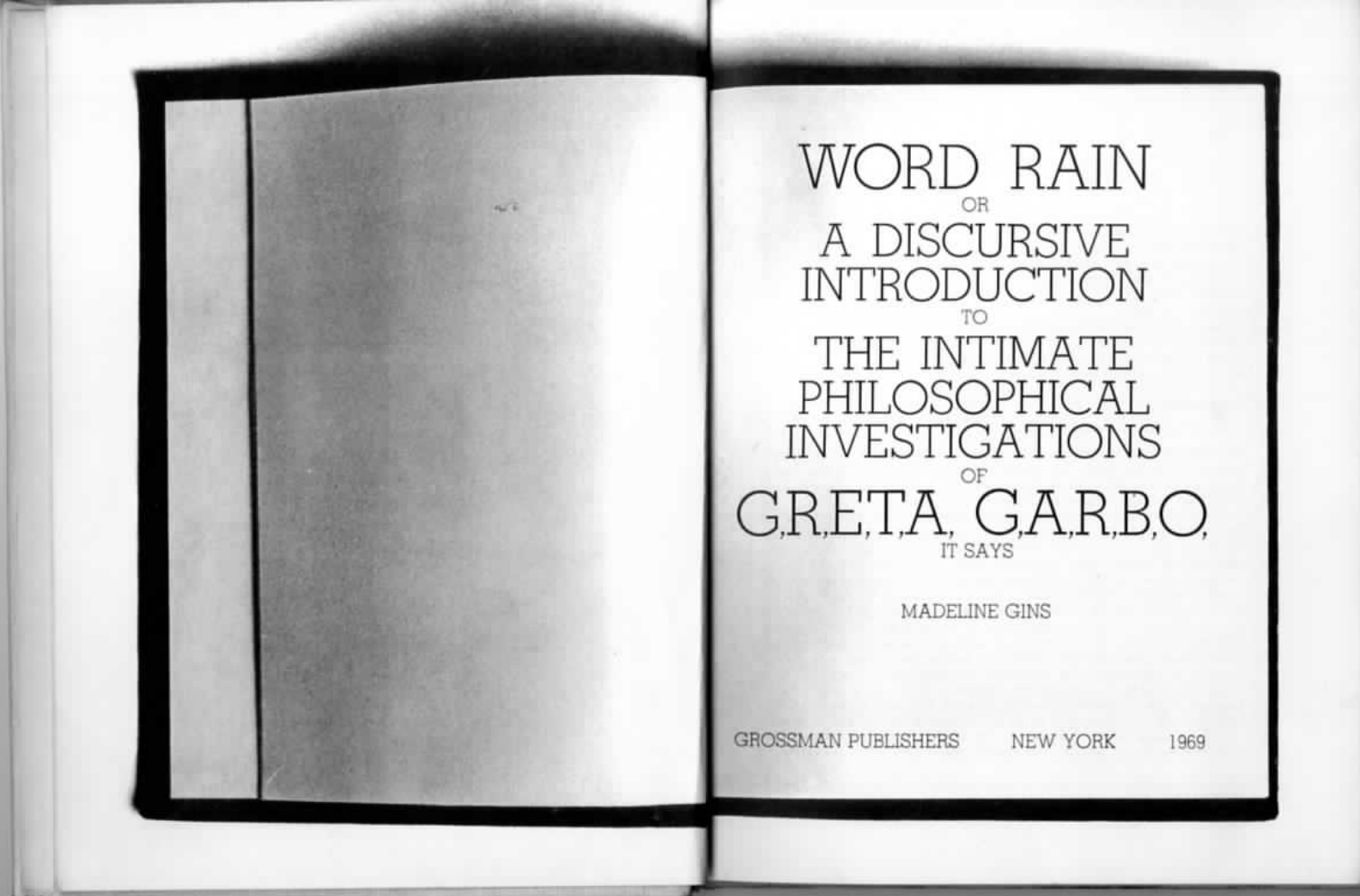
Gins does not assume the authority a printed voice would usually imply. Some pages of WORD RAIN read vaguely like varying executions of a script of a happening: there are recurring story elements (like a package delivered or a birthday party taking place in the next room), as well as actors who roam around the narrative, perhaps entangled in its grasping/gasping. Gins also persistently describes the author as she sits in front of the page, including her moods, her appetite, and the positioning of her body—a kinesthetic, draining depiction of the writing process. The page is not an empty, pure receptacle, but an object subject to whim, fatigue, and interruption within the reach of other (microphytic) agents. Thus, language takes the form of weather: naturally occurring, constant yet non-binding, formative yet fleeting. Linguistic expression is an extension of consciousness and therefore of the body in situ—the aforementioned mind-body dichotomy is reiterated in these scenes but also subsumed through the creative process: “I am warmer than paper. I can hold more words. My erasures can be made to reappear. Words need not merely press themselves parallel to me; any angle of entrance is acceptable and useful”[4]. Words move in and out of the body and vice versa, like breathing. Permeable to exterior influences and the mundanities of physical reality, it is rather different than a language abstracted from the site that created it and is exacting enough to write philosophical treatises or political manifestos.
Flux threatens the stasis of the written world created by Gins. Despite this, we can perhaps still sense her desire to assert authorial control. Perhaps the most arresting passages are the ones in which the reader is directly addressed. The author is cognizant of the need for a recipient. Her work, abstracted and contained within the book, must be re-activated through reading. Gins plays on the fact that the activity in the reader’s mind is orchestrated by the author, yet at any time, the reader can withdraw, denying transmission:
In this case a good idea which I have given you is to do the opposite of what I say in spite of yourself: please don’t touch the book and no kissing. Think of others before you think of yourself. Don’t think of your family and the danger they are in at every moment. This is not the place for that. Perhaps the best way you could help me now would be to disappear. Vanish. Don’t read the next paragraph on this page. Forget that you have ever seen this book. Scream for every word you will not see. Perceive nothing. Lose track of me. Kill me. And I hope that I am assured that you will not read between the lines.[5]
The author seems to resent her dependency. If the need for reciprocity is this visceral, what is the function of additional barriers? She seeks the other through metaphors and literary devices, a word instead of sound and a symbol in place of a look. Perhaps the otherness posited by books, art objects, and their expressive devices creates an unresolved space in which both subjectivities are negated enough so as to have the necessary distance for seeing. The published work seeks expression and recognition outside of intimacies, through and to foreign subjects. So while the author is capable of speaking to the reader, she makes use of a character, an unnamed “she”, to mediate:
I appear on a page which would otherwise be blank. I, the mist, the agent, she, appear to swoop you and stratify you, circle you, and synthesize, just as I do now in this short paragraph into which I have fallen. I am not telling you but you are thinking that the two pages between which I fall were made by me in her for you to see you against the same word rain, through the mist, against different patterns of breath, similar but different accents to your attention. I have taught her how to make this special ruler by which you can measure yourself. In order to make the words move, you must give your attention to them. Notice I am gone.[6]
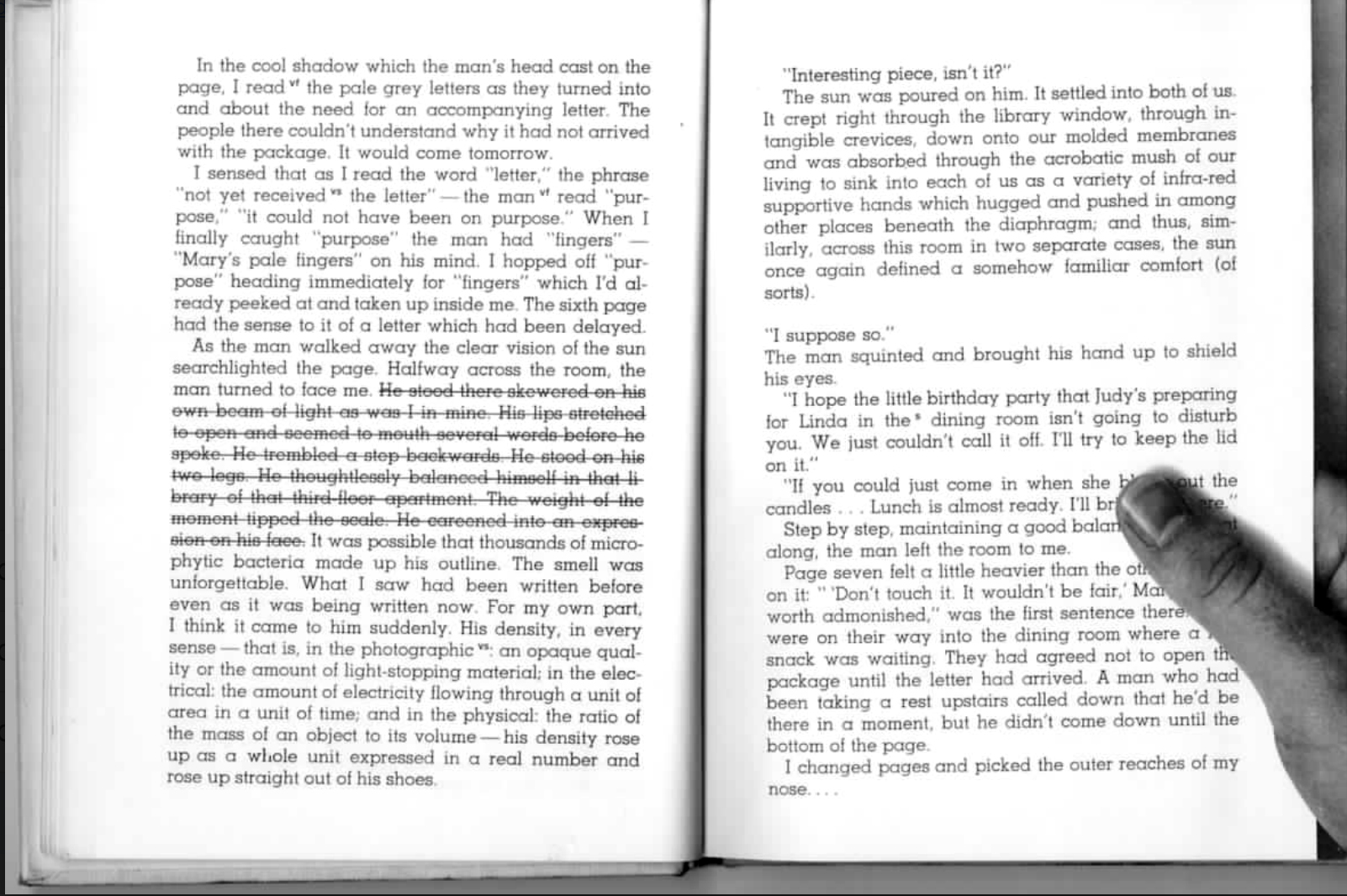
The author’s influence only exists through obscuring itself, creating a mist of meaning and recognition. If we see ourselves in the character or the character of a word, we come to know the author via extrapolation. Full disclosure would be not only too easy but ineffective. Distances emerge so we may imagine surmounting them. There is a creative value we assign to “mist”-ifying ourselves, for through abstraction between objects (body to book) and subjects (lived, subjective experience to shared language) the author gives the reader a way in via self-denial. If the work was just that, excess positivity of the self, the self consuming itself in production, it would be an art that caves in on itself. The familiar yet ambiguous presence of the symbol serves to unveil parallels between experiences. This is the intimacy and dedication within the site of artistic encounters: “I am thinking of you. I must always think of you and scribble in your outline. I write you. I read you. And it seems furthermore that I must read and write for you.” [7]
Authorship and the desire for the reader bring up another site of conflation: between externality and internality. The author or artist makes things to be encountered by those who exist beyond the scope of their life. The internalization of words, the lingering remnants of the other’s expression, makes them a part of our private selves. Translation through channels of a medium becomes appropriation by and into subjectivity. But is the delayed message of the other, particularly that of an author or artist one has never met, “more” private and inner than the happenings of life, inhabited space, the living body of perceptions, and the flux of one’s time? Is the exteriority of the physical world further than a nearby, resonant phrase? It seems that “internal” is merely something we shift our perspective towards. What we find, then, is that internality and externality imply not merely opposite spatial configurations, but relative, subjective understandings of distances, familiarity, and ownership: a question of what, through seeing and perception, paradoxically becomes an extension of the body. An intimacy exists in a recircuited thought, even if the reader created it through yearning for that which threatens to elude them. Gins expresses the literary voices she herself has internalized by quoting the likes of Woolf, Beckett, Dostoevsky, Stein, Sartre, Nabokov, and Minnie Mouse. These excerpts form a rich network, originating externally yet presented in the bound object with echoes of the author’s fingertips. Gins knows that she must be admitted into the reader’s internal space and that she can only do so by writing a message that will linger: “The paragraph which you are about to read has never been written. You are writing it now. I will write you. I will telephone you. I will ring your doorbell. I am not finished with you. I will answer for you.” [8]
To suggest boundaries, to draw a line or write a word, is to declare an existence of at least two separate entities, to render an opposition and make it legible. But to contradict or reverse a boundary is in itself creative. Gins lists “temporary” definitions of words and uses them to constitute a paragraph. Then, she makes an opposing list, canceling what she envisioned on the previous page. She also uses neologisms, fragments, and rearrangements. This is not merely to negate language as function but also to resist the rigid dichotomies and ontologies only felt in binaries. To halt the original trajectory of words through conflating opposites is to carve new routes.
Reversibility thus describes either the condition in which meaning, content, and distinction collapse, or alternatively, it is the poetic unveiling of new meanings. It becomes transformative in Gins’s hand and in the reader’s engagement, an exchange outside well-weathered channels. If language were a transparent medium, we could rely on its direct cohesion to reality. But it is in fact a filter sifting all it touches. The tensile condition of language posits that we keep searching for the other within it, despite and because of its opaque haze. Negation of the self becomes liberation from determinism, not only of language but of a confining subjectivity as well. The author’s transformative destruction would not be so without her concern, desire, and care for the reader: “I feel I am ready to talk now. You are talking. I cannot prove that I (you) am reading. Is there enough space for you?”[9]
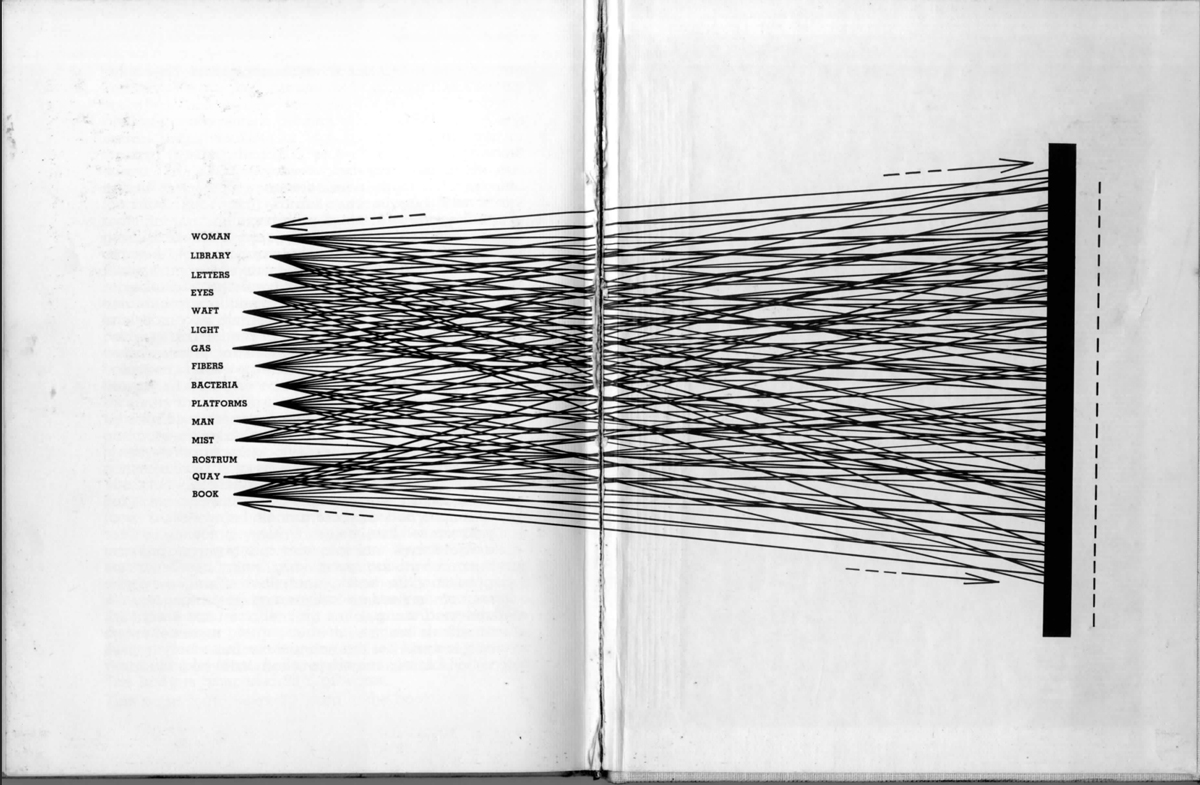
[1] Lucy Ives, “EVERYTHING I RECEIVE WILL BECOME PART OF A NOVEL: An Introduction to the Work of Madeline Gins,” in The Saddest Thing Is That I Have Had to Use Words: A Madeline Gins Reader, ed. Lucy Ives (Catskill, NY: Siglio, 2020), 25.
[2] Madeline Gins’s WORD RAIN (or A Discursive Introduction to the Intimate Philosophical Investigations of G,R,E,T,A, G,A,R,B,O, It Says) was originally published by Grossman Publishers, New York in 1969 and is reproduced in facsimile in its entirety in The Saddest Thing Is That I Have Had to Use Words: A Madeline Gins Reader, 78–213.
[3] Marshall McLuhan, Understanding Media: The Extensions of Man, [Critical Edition], ed. Terrence Gordon (Berkeley, CA: Gingko Press, 2015), 19.
[4] The Saddest Thing Is That I Have Had to Use Words: A Madeline Gins Reader, 152.
[5] A Madeline Gins Reader, 144.
[6] A Madeline Gins Reader, 140.
[7] A Madeline Gins Reader, 92.
[8] A Madeline Gins Reader, 206.
[9] A Madeline Gins Reader, 206.
